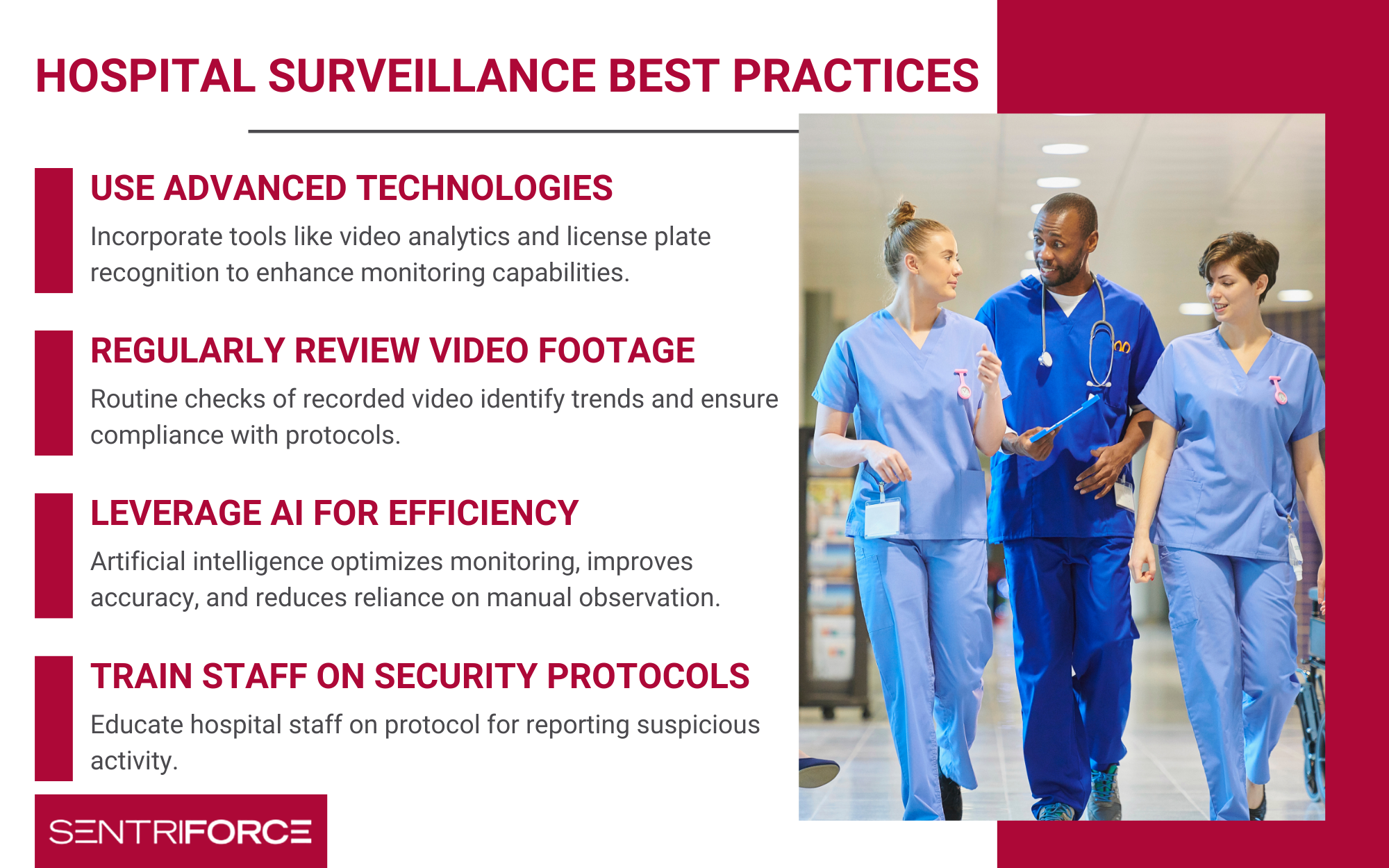Hospital Video Surveillance: Best Practices
Video surveillance in hospitals is a critical tool for ensuring patient safety, streamlining operations, and meeting HIPAA compliance requirements. Surveillance systems provide healthcare facilities with the ability to monitor sensitive areas, support hospital staff, and improve overall security. For hospital administrators, adopting modern technologies to support this goal is essential for meeting the challenges of modern healthcare.
Why Hospitals Need Video Surveillance
Surveillance systems help healthcare facilities monitor patient safety, ensure proper staff conduct, and respond quickly to potential threats.
With features like real-time video monitoring and video analytics, hospitals can detect unusual behavior, safeguard sensitive areas, and protect hospital staff. Surveillance video also supports forensic investigations, helping healthcare organizations address incidents efficiently. These systems not only improve safety but also enhance operational efficiency for hospital administrators and healthcare providers.

Common Areas for Security Camera Placement
Proper placement of surveillance cameras ensures comprehensive coverage and improves safety in critical areas of a hospital:
Parking Lots and Garages
Installing security cameras in parking areas enhances visibility, facilitates license plate recognition, and deters unauthorized access.
Entrances and Exits
Monitoring hospital entry and exit points ensures access control and supports the flow of hospital staff and visitors.
Operating Rooms and Sensitive Areas
Surveillance cameras in these locations help protect valuable equipment and confidential procedures while maintaining patient safety.
Hallways and Common Areas
These high-traffic zones benefit from surveillance systems that ensure safety and situational awareness.
Placing security cameras in these areas helps healthcare facilities prevent incidents, protect assets, and ensure smooth operations.
Video Surveillance for Patient Monitoring and Care
Video monitoring extends beyond security to significantly improve patient care. Real-time surveillance ensures patient safety, particularly in intensive care units (ICUs) and recovery areas. It allows healthcare providers to monitor patients remotely, reducing the need for physical check-ins while enhancing care quality.
Advanced features like facial recognition and object detection improve staff efficiency by identifying potential hazards or emergencies. Video analytics also assists healthcare professionals in maintaining situational awareness, enabling timely intervention when needed. By leveraging video camera systems, like those offered by SentriForce, hospitals can deliver superior patient care without compromising privacy or safety.
Balancing Security and Privacy: Addressing HIPAA Compliance
Balancing security with privacy is critical in healthcare. Hospitals must adhere to HIPAA regulations, which mandate strict guidelines for managing video surveillance systems. Surveillance video must be stored securely, ensuring that only authorized personnel have access to the footage.
To maintain compliance, healthcare organizations should:
- Use encryption for video recording and storage.
- Restrict access to surveillance footage to necessary personnel only.
- Avoid placing cameras in areas where privacy concerns outweigh security needs, such as restrooms or patient examination rooms.
By following these best practices, hospitals can protect sensitive areas, ensure HIPAA compliance, and provide peace of mind to patients and their families.
Best Practices for Managing Video Surveillance Systems
Effective video surveillance in hospitals requires a thoughtful approach to implementation and management.
Use Advanced Technologies
Incorporate tools like video analytics and license plate recognition to enhance monitoring capabilities and provide actionable insights for hospital administrators. These technologies help streamline operations and improve situational awareness.
Regularly Review Video Footage
Routine checks of recorded video help identify trends, ensure compliance with security protocols, and uncover opportunities to improve safety measures. At SentriForce, we know your top priority is patient care, that’s why our personnel are monitoring 24/7 and providing you with reports on any threat.
Provide Staff Training on Surveillance Systems
Educate hospital staff on protocol for reporting suspicious activity. This ensures that the team can respond promptly to alerts and make the most of the system’s capabilities.
Leverage AI for Operational Efficiency
Artificial intelligence optimizes real-time monitoring, improves accuracy in detecting anomalies, and reduces reliance on manual observation, ensuring consistent performance.
Secure Your Hospital Premises with SentriForce
Video surveillance is an indispensable tool in the healthcare industry. From ensuring patient safety to protecting sensitive areas and complying with HIPAA regulations, hospitals rely on surveillance systems to maintain secure, efficient environments. With advanced features like real-time monitoring, video analytics, and forensic search capabilities, video surveillance systems help healthcare facilities stay ahead in a complex and demanding industry.
For hospitals seeking reliable security solutions, SentriForce provides customized video surveillance systems tailored to the unique needs of healthcare facilities. Contact us today to learn how we can help protect your patients, staff, and operations.



